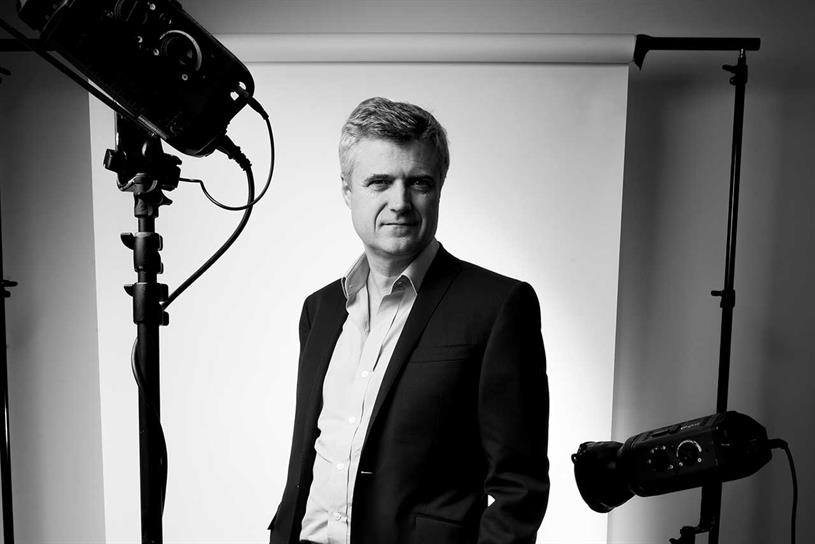WPP says integrated pieces of business that combine multiple disciplines now make up about a third of its new-business pipeline as a growing number of clients are bringing creative and media back together.
“Finally, after many years of people talking about it and clients going backwards and forwards on it, I really do think that clients now need a more integrated offer across the disciplines and that is what I consistently hear from them,” Mark Read, chief executive of WPP, told Campaign.
“If we look at our pipeline [of pitches] and major opportunities, it’s roughly a third creative, a third media and a third integrated, I would say.”
Read, who was speaking after WPP’s third-quarter results, declined to give a figure for the proportion of integrated pitches that the group might have faced a couple of years ago, but indicated that there has been a notable increase.
‘We’re seeing media and creative brought together’
Even though there continues to be a “division” between the creative and media disciplines inside the big agency holding companies, “we’re seeing that join together” in a growing number of client pitches, Read said. “We’re seeing media and creative brought together.”
Both Centrica and Axa recently ran creative and media reviews simultaneously, although the latter client ended up using two holding companies rather than one on media.
Read went on: “Even when clients may ask questions primarily about creative or primarily about media, a key point that they are asking us is how we integrate what we are doing.”
He cited Mondelez International’s recent creative pitch as a “really interesting” example of a client that reviewed one discipline but also used the process to look at “driving through an integrated creative and media strategy in the work”.
Advertisers want “much greater teaming” between creative, media and other disciplines, Read explained.
The need for greater integration and to “eliminate this artificial distinction between analogue and digital or creative and digital” was part of the rationale for Read’s decision to merge Wunderman and J Walter Thompson to create Wunderman Thompson and to fuse VML and Y&R to form VMLY&R in autumn 2018.
VMLY&R grew in the third quarter but “it will take more time” for Wunderman Thompson because it is a bigger business to turn around, he told investors.
When Read carried out a group-wide restructuring last year, he ruled out the idea of WPP merging a creative agency with a media shop, and he remains opposed to such a move.
Read said he would rather bring creative and media together on a case-by-case basis as, Ogilvy and Wavemaker have done for British Airways. “The organising principle of WPP is the client,” he maintained.
Asked if he was considering more agency mergers within the group, Read said: “Broadly speaking, we have the right balance of brands today.” However, he conceded: “Things do evolve, things do change.”
Read was dismissive of former WPP chief executive Sir Martin Sorrell’s suggestion that Group M, the media buying division, would be more valuable if it were sold off. “I don’t think that makes any sense at all,” Read told analysts.
‘We’re all wrestling with the same challenges’
Many of WPP’s rivals, including established competitors such as Publicis Groupe and new entrants such as Accenture Interactive, have also talked about clients’ desire for greater integration and a more joined-up approach.
Read has launched a three-year turnaround plan to return WPP to growth by 2021 and the group posted its first revenue increase in four quarters in the third quarter of this year.
Publicis and Dentsu Aegis Network have seen revenues go into reverse this year as some big clients have cut agency fees and taken marketing services in-house, and Read said there are “a number of issues we need to address as an industry”.
Referring to the big agency groups, he explained: “We’re all wrestling with the same challenges: how do we evolve our creative offer? How do we bring technology more into what we do?
“How do we build our capabilities, data and analytics? How do we train the next generation of client leaders who understand the challenges that modern marketers face who aren’t specialised in a single discipline? I do think clients want a more integrated offer.”
Read insisted that agency groups can prosper because clients will always need “ways to differentiate products and services”, even as the market changes with innovations such as ecommerce and streaming.
Ad-free streaming will lead to ‘reduction in opportunities’ for marketers
Read acknowledged that the rise of streaming could pose a challenge for marketers because many of these services, including Disney+ (which launched on 12 November), Apple TV+ (which debuted on 1 November) and Netflix, carry no ads.
It is “pretty clear” that traditional advertising “is going to be more challenged by a reduction in the number of opportunities” to reach audiences as they spend less time watching linear TV, he said. “We are many years away from analogue television disappearing, but the reality is we are the other side of peak TV.”
Yet Read was optimistic that clients will continue to need WPP as they navigate the rapidly changing media and communications environment.
“I don’t think the growth of streaming services means that the demand for marketing and ideas and ingenuity diminishes,” he said.
He added: “If anything, it makes it more important and more valuable. We just need to think about expressing it in different ways,” pointing to areas such as commerce, technology and experiences.








